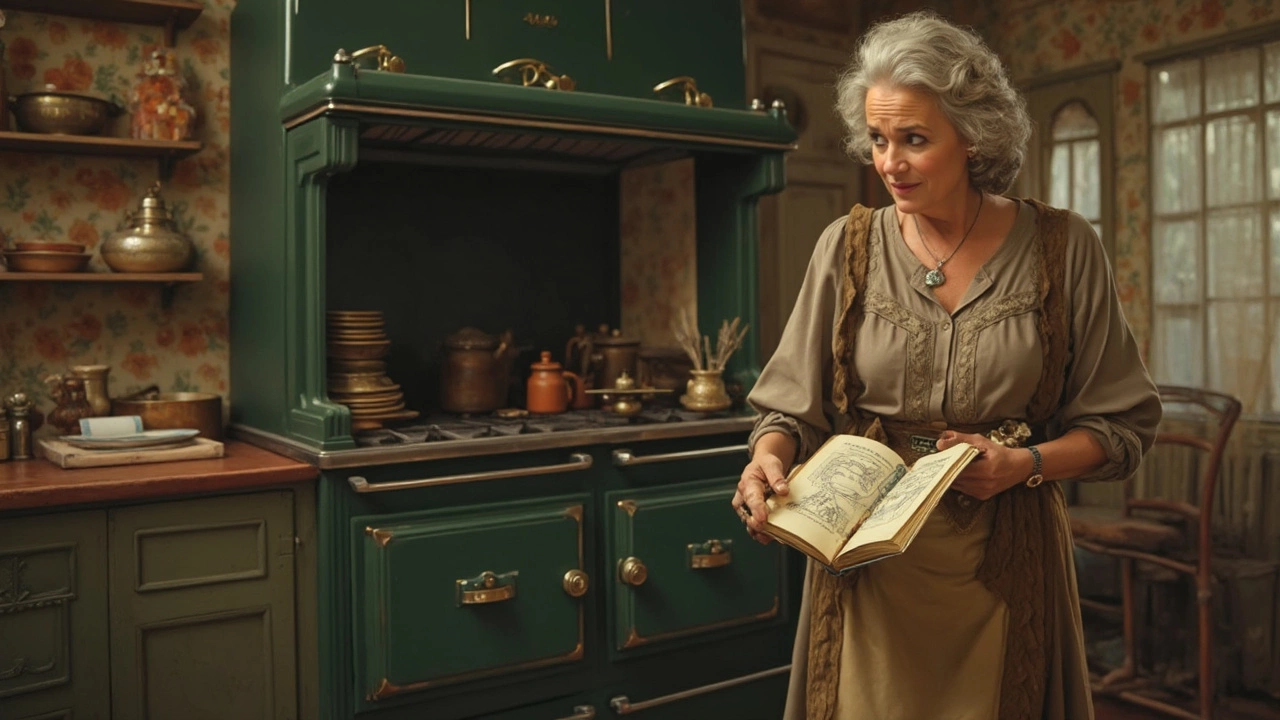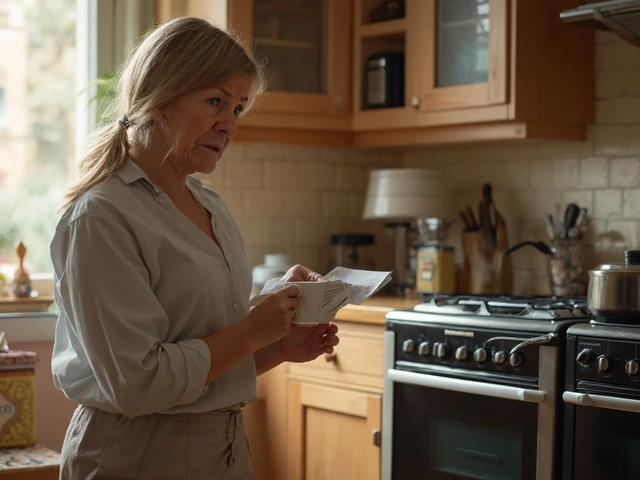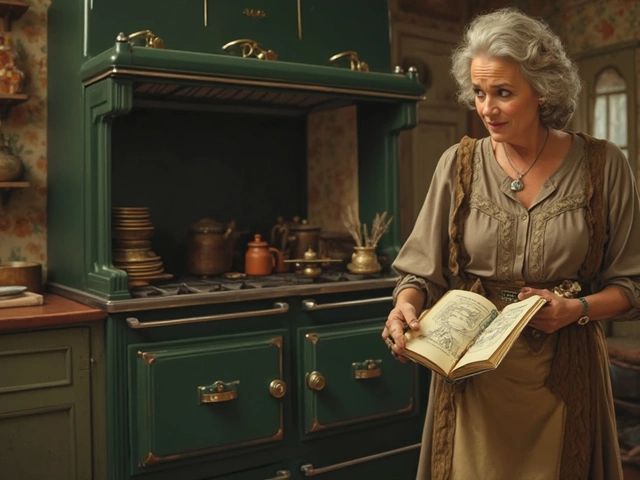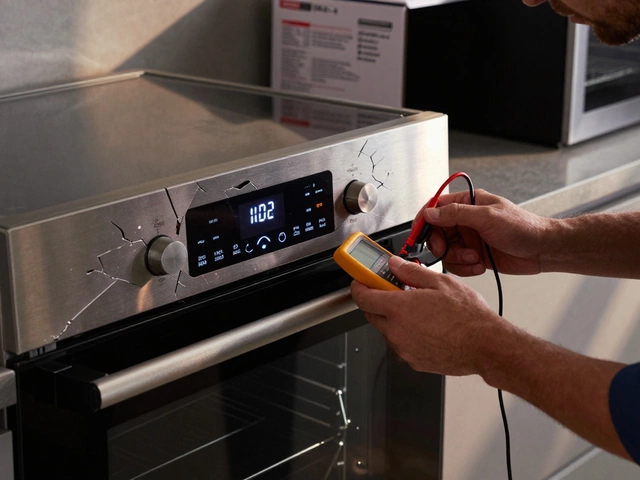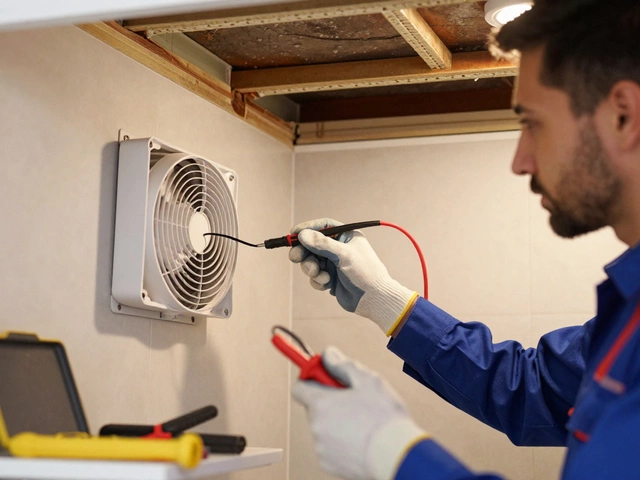So, your oven's gone rogue, and your pizza night's looking uncertain? I've been there. First thing, let's tackle the basics. Make sure your oven is actually plugged in - hey, it happens. No joke, a power connection issue is a sneaky culprit sometimes.
If that checks out, peek at your circuit breaker and ensure the oven switch hasn't flipped. If your oven refuses to heat properly, don’t panic. It might be as simple as a faulty igniter or a burnt-out heating element, both of which are pretty straightforward for a DIY fix.
And those annoying beeps or strange noises? Yeah, they can drive you nuts. Often, they're just alarms or reminders but sometimes signal something more serious. If the display is playing tricks on you, it could be wiring or control board issues.
Of course, some problems need a pro's touch, and knowing when to call for help can save a lot of headaches. Don't sweat it—you got this. Let's dive into the details and keep that oven in tip-top shape!
- Understanding Common Oven Problems
- Checking the Oven's Power Supply
- Tackling Temperature Issues
- Dealing with Unusual Noises
- Addressing Faulty Lights or Displays
- When to Call a Professional
Understanding Common Oven Problems
When your trusty oven starts misbehaving, it's like your kitchen's rebelling. But don't worry, identifying the usual hiccups can get you halfway to a solution. Here are some of the common issues folks face with their oven repair adventures.
Heating woes are probably the chief complaint. If your oven isn’t heating, or it's cooking everything at a snail’s pace, you might be dealing with a dead heating element or a wayward thermostat. These parts are crucial because they regulate how hot things get in there.
Next up, temperature discrepancies. Picture this: you want to bake cookies, set the oven to 350°F, but it feels like it's trying to roast in the Sahara Desert. This often points to a misreading thermostat or a damaged sensor that’s sending funky signals.
Strange odysseys begin when there's a malfunctioning igniter in gas ovens. If it clicks but doesn't ignite, something's off. Electric ovens can fizzle out if the broil or bake setting is kaput, usually identified by an ominous silence or that telltale chemical aroma.
| Common Issue | Potential Cause |
|---|---|
| Oven doesn’t heat | Faulty heating element |
| Uneven cooking | Thermostat issues |
| Gas won’t ignite | Malfunctioning igniter |
| Noisy operation | Worn fan motor |
Another mystery is when your oven makes weird noises. Rattles, hums, or whirring sounds? They might just be the fan motor wearing out. A rattling oven is no concert, but a sign it’s crying for some TLC.
All these issues can throw a wrench in your meal prep. Identifying these signs early can save you a lot of trouble and maybe a pretty penny in repair bills. So keep an eye out, and you might just fix your oven before it needs serious intervention.
Checking the Oven's Power Supply
If your oven isn't turning on or heating up like it's supposed to, let's first make sure it's actually getting power. Believe it or not, this is a common issue. Begin by confirming that the oven is plugged into a working outlet. Seems obvious, but you'd be surprised how often this gets overlooked.
Next, head over to your home's circuit breaker. An overloaded oven could have tripped the circuit breaker. Check if the switch for your oven is in the 'on' position. If it's flipped, just switch it back and see if that solves things.
Still no luck? It's time to grab a multimeter to test the outlet. This little tool helps you check if there's electrical power reaching your appliance. When you stick the multimeter's prongs into the outlet, it should show a reading of around 220 to 240 volts, typical for most ovens. If it's far off, there's a chance the issue lies with your home's electrical system, not just the oven itself.
- Ensure the cord is fully inserted into the outlet.
- Inspect the plug and cord for damage. A frayed or cut cord can disrupt power flow.
- Verify the circuit breaker hasn't tripped. Reset if necessary.
- Use a multimeter to check outlet voltage.
If you've gone through these steps and your oven still isn't cooperating, you might be dealing with a more serious electrical issue. At this point, calling in an electrician or a professional repair technician could save you a lot of grief—and keep you safe from potential electrical hazards.
Tackling Temperature Issues
We've all been there—preheated the oven for ages, only for your cake to come out half-baked. The frustration is real. When your oven decides its internal thermostat is just a suggestion, you might be dealing with oven repair territory.
First up, grab an oven thermometer. Place it in your oven and compare the reading with your oven's display. A discrepancy of 5-10 degrees? Normal. Anything more than 30 degrees and you've got a problem.
Possible culprit number one: the heating element. Check it for any visible damage. If it's unevenly glowing or showing signs of wear, it's time for a replacement.
Next, look at the temperature sensor, which is usually attached to the back wall inside your oven. If it’s touching the wall, it might give an inaccurate reading, causing temp issues. Adjust it so it doesn't touch anything.
If you're still scratching your head, the likely suspect could be a faulty thermostat or control board—a bit more technical and something a repairman should handle.
Need a quick reference? Here's a tiny guide:
- Test with a separate oven thermometer.
- Inspect the heating element for wear or damage.
- Ensure the temperature sensor isn’t touching the wall.
- Consider professional help for thermostat or control board issues.
Keep these steps handy, and you’ll save yourself from undercooked meals and half-baked disappointments!

Dealing with Unusual Noises
Oven making odd noises? It's more common than you think but can feel like your kitchen's auditioning for a horror flick. Let's break down those sounds and what they could mean.
A common culprit is the fan. If your oven's making a racket, give the fan a glance. Sometimes, it's just a case of a loose blade or debris getting caught. If you’re handy, removing the back panel to inspect and clean around the fan could do wonders.
Buzzing or humming noises might signal electrical issues. These can point to faulty electrical connections or malfunctioning control boards. Tinkering with electrical components might be a bit hairy if you're not confident. In these cases, it's better to call in a pro before anything gets fried.
If your oven rattles or bangs, it might be something to do with the heating elements expanding or contracting. It’s normal when the oven heats up or cools down, but persistent loud bangs are not. Ensure the elements are properly secured, as loose ones can clatter against the oven walls.
Oven repair doesn't have to be daunting. Sometimes a little patience and a Phillips screwdriver are all you need to tackle minor issues. But if things seem above your pay grade, don’t hesitate to reach out for professional help.
Addressing Faulty Lights or Displays
If your oven's lights or display panel are acting funky, it can feel like you're cooking in the dark—literally! But don't stress just yet. Most issues with oven lights or display malfunctions are pretty common and can be fixed without too much hassle.
First things first, let's talk about those stubborn oven lights. If your light won't turn on, it might just be a burnt-out bulb. Start by swapping the bulb with a new one to see if that does the trick. No luck? Then it could be an issue with the light socket or even the electronic control board.
The display panel being on the fritz can be a real pain too. You might notice flickering numbers, missing segments, or an entirely blank screen. Usually, these display issues are caused by a power surge or might mean the control board's gone bad. Try resetting your oven first by unplugging it for a minute and plugging it back in. Sometimes, a simple reset works wonders.
According to a handy tip from
The Appliance Doctor, "if the display is only partially working, it might hint at a failing touchpad or control board, which typically requires professional repair or replacement."
Once you've tried the easy fixes and if the problem's still there, it's probably best to call in a pro. Trust me, trying to fix advanced electronics without the right skills can lead to more headache—and nobody wants that.
| Common Issue | Fix |
|---|---|
| Burnt-out bulb | Replace the bulb |
| Flickering display | Reset the oven |
| Blank screen | Check control board |
When to Call a Professional
Sometimes, despite your best DIY efforts, your oven might still be misbehaving. That's when you know it's time to throw in the towel and call a professional. But when exactly should you make that call?
If you’re noticing any burning smells that don’t seem connected to food, it could be a sign of electrical issues. Faulty wiring in an oven can be dangerous, and that’s definitely not something to experiment with unless you’re a qualified electrician.
Another clear sign to call a pro is if your oven door isn’t closing properly or has cracks in the glass. Not only can this mess with cooking temps, but it's also a safety hazard. An expert can fix or replace it correctly, saving you from any further problems down the line.
Digital displays that are blank or flickering could indicate a bigger problem with the control board. While these electrical issues might seem minor, they usually require specialized tools and knowledge that most of us don’t have lying around the garage.
And then there’s the thermostat sensor. If you’ve tried recalibrating and your dishes still come out overcooked or undercooked, it might be more than just a sensor issue. A repair professional can run diagnostics that pinpoint the real problem without wasting your precious time.
| Common Issue | Professional Solution |
|---|---|
| Electrical Smell or Sparking | Replace Faulty Wiring |
| Cracked Door Glass | Replace Glass Pane |
| Blank Digital Display | Repair Control Board |
So, when’s the right time to dial up an expert? If you suspect safety or electrical issues, or if repairs seem beyond basic troubleshooting, getting help from a professional might just save your oven and prevent bigger problems in the future.

